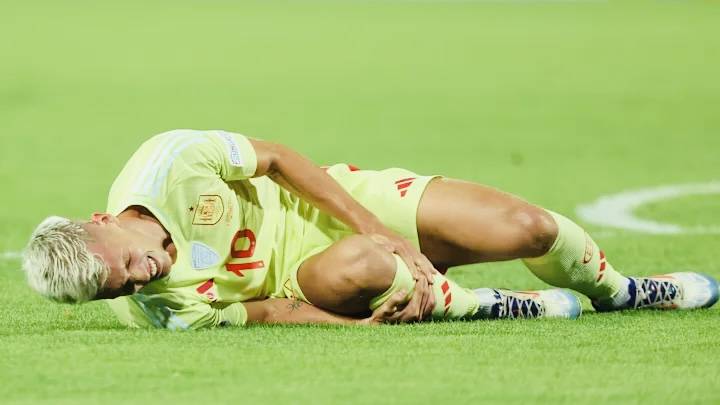Barcelona has been hit with another setback as Dani Olmo has been forced to return to the club after suffering a knee injury while representing Spain. The injury occurred during Spain’s 0-0 draw with Serbia, marking their first match since their victory at Euro 2024. The game, which took place in Belgrade, ended in a goalless stalemate, and Olmo, who had been in good form, had to leave the field late in the second half due to a significant blow to his knee.
There was initial hope that Olmo might recover quickly enough to participate in Spain’s upcoming match against Switzerland. However, recent reports indicate that the 26-year-old will be returning to Barcelona for further evaluation and rest. Despite the injury not being considered extremely serious, the decision was made to prioritize Olmo's long-term health by having him rest, rather than risking aggravation by continuing to play.
Barcelona's schedule is set to continue with a La Liga fixture against Girona next Sunday. They are also preparing for their UEFA Champions League campaign, which kicks off with an away match at AS Monaco the following Thursday. Dani Olmo has made a notable impact at Barcelona since his arrival, scoring in each of his first two games. His debut featured a crucial late goal in a 2-1 win over Rayo Vallecano, and he also contributed to a commanding 7-0 victory over Real Valladolid. Currently, Barcelona leads the La Liga table after four rounds of matches.
In order to comply with La Liga’s stringent financial regulations and successfully register Olmo as a summer signing, Barcelona had to make significant adjustments. This included removing the injured Andreas Christensen from the roster and resolving the financial details related to Ilkay Gundogan’s wages. These steps were necessary for the club to fit Olmo within the league’s salary cap constraints.
The injury news comes as a blow to Barcelona, particularly given Olmo’s promising start and the team’s current form. His return to the club for treatment highlights the ongoing challenges teams face in managing player fitness and adhering to regulatory requirements in modern football.


